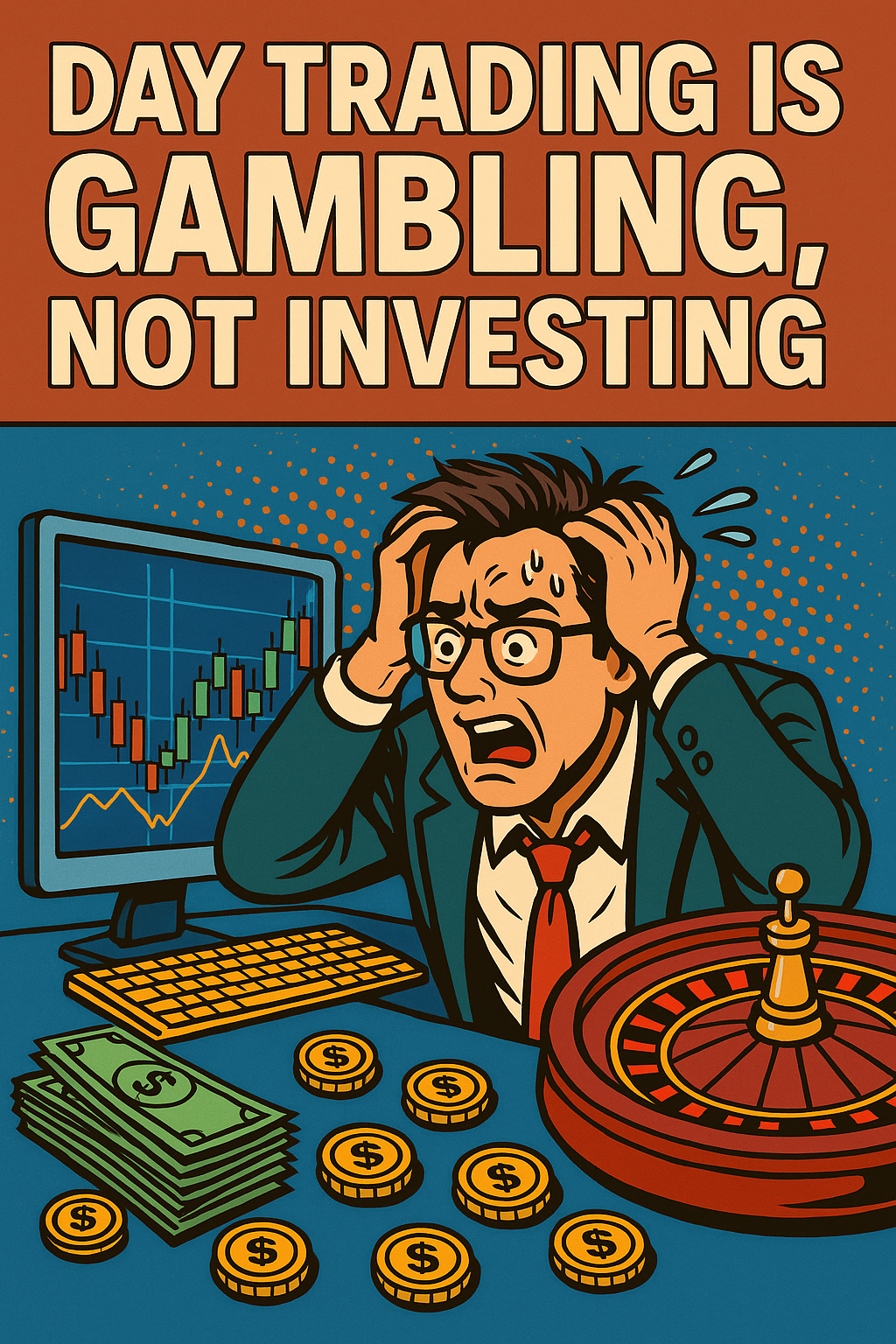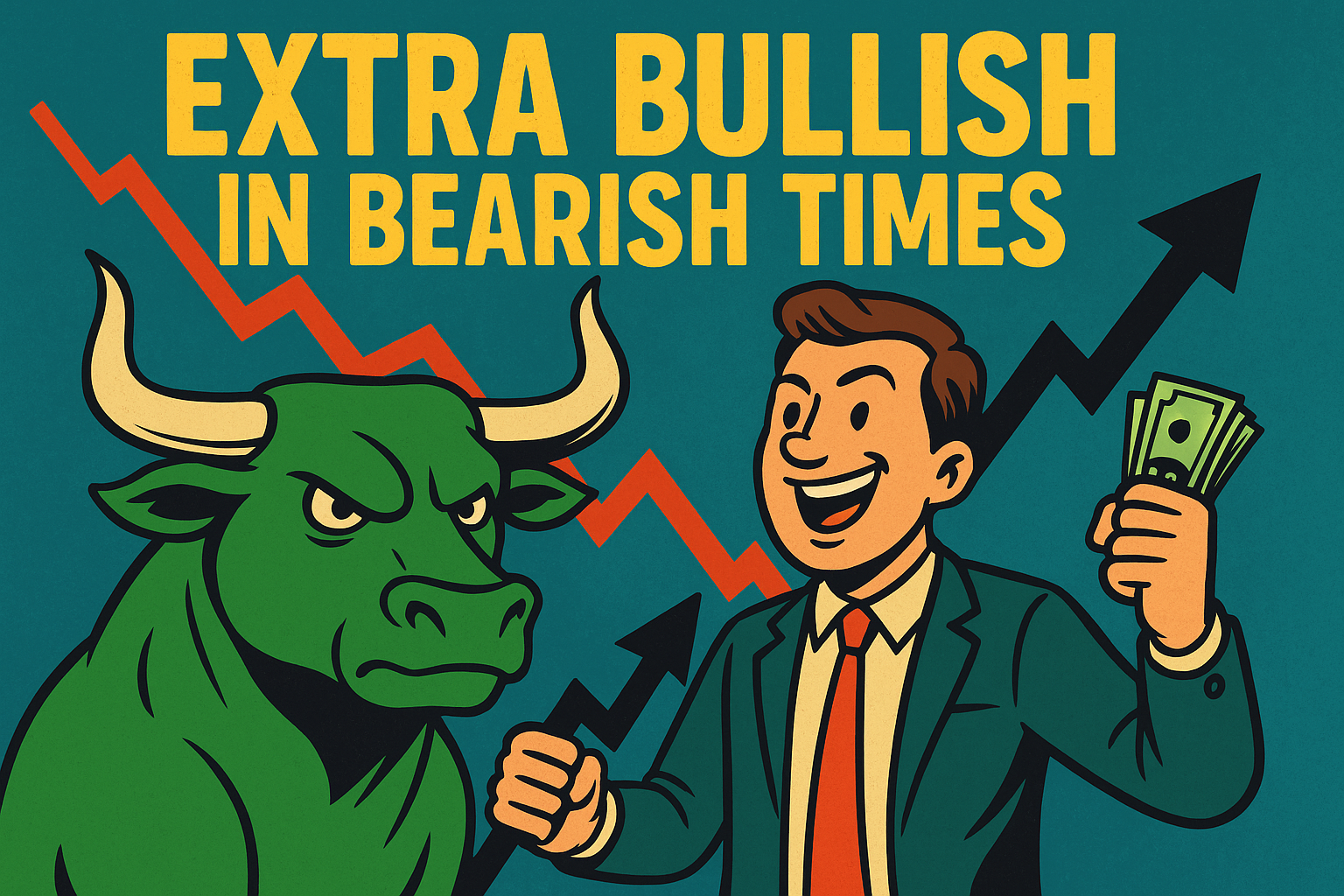Welcome to the Casino of Wall Street
Imagine waking up at 6:30 AM, chugging three espresso shots, and logging into your Robinhood account like it’s Vegas at midnight. You’re shirtless, hyped, and whispering sweet nothings to your monitor, “C’mon Tesla, daddy needs a new pair of shoes!” Sound familiar? Congratulations—you’re not investing. You’re gambling with a Wi-Fi connection and a caffeine addiction.
Welcome to the chaotic clown car that is day trading. Spoiler alert: it’s not investing. It’s just legalized, caffeinated roulette. And we need to talk about it before you lose your rent money playing pretend Warren Buffett.
What Is Investing Anyway?
Investing is what adults do when they want to build long-term wealth without ulcer-inducing screen refreshes. It’s like planting a tree—you water it, wait, and one day, boom: shade and fruit. Actual investing involves:
- Researching fundamentals
- Analyzing long-term trends
- Diversifying assets
- Holding for years
In short, it’s boring. But boring is sexy when you’re not broke.
Disclaimer: As an Amazon Associate, I earn from qualifying purchases. This means if you click on a link and make a purchase, I may receive a small commission—at no additional cost to you.
What Day Traders Think They’re Doing
Day traders think they’re Jordan Belfort with a caffeine drip and a free trial of TradingView Pro. They buy and sell within hours, sometimes minutes, riding technical charts like they’re on a Six Flags roller coaster.
They’ll say things like:
- “The RSI is overextended on the 5-minute chart.”
- “MACD crossover incoming, bro.”
- “It’s a dead cat bounce, I swear.”
They speak fluent nonsense, lose 80% of their portfolio, and then tell you it’s all part of the strategy.
What They’re Actually Doing
Gambling. Pure and simple. No different from slot machines, except slot machines don’t send you push notifications.
Let’s break it down:
| Investing | Day Trading |
|---|---|
| Based on company performance | Based on chart squiggles and hype |
| Time horizon: years/decades | Time horizon: milliseconds |
| Diversified portfolio | YOLO into one stock |
| Long-term wealth accumulation | Instant gratification addiction |
| Sleep at night | 3:00 AM sweats watching crypto futures |
It’s Vegas. Just with more Reddit threads and fewer complimentary drinks.
Why the Odds Are Stacked Against Day Traders
Here’s a not-so-fun fact: Most day traders lose money. Like, almost all of them. Multiple studies show that more than 90% of day traders eventually fail. Not “kind of failed.” Hard failed. Crying-in-the-shower levels of failure.
Here’s Why:
- Fees eat your soul – Even “zero-commission” trades cost you in spreads, slippage, and blood pressure medication.
- Emotional whiplash – Greed and fear swing your decisions more than actual data.
- No edge – You’re not a hedge fund with a team of PhDs and high-frequency trading algorithms. You’re Steve from Boise with a $1,200 Robinhood account and a YouTube addiction.
- Confirmation bias – Reddit told you Palantir was the next Amazon. Now you can’t afford Amazon Basics toilet paper.
The House Always Wins
Wall Street loves day traders. Loves them. You are the house’s best customer, willingly tossing your chips into the algorithmic black hole where institutional traders devour retail noobs for breakfast.
Day trading is the financial version of fighting a bear while wearing bacon underwear.
Meanwhile, actual investors are off sipping mojitos, letting their index funds compound quietly for decades.
Warren Buffett Isn’t Day Trading. Neither Should You.
You know what Warren Buffett does? He buys quality companies and holds them for, like, 50 years. You know what he doesn’t do? Wake up and say, “Better scalp NVIDIA today or I won’t make rent!”
Buffett plays the long game while day traders are basically trying to win Monopoly with real money and emotional instability.
You can follow one of the richest, smartest investors ever…
Or you can listen to Chad on TikTok screaming “BUY THE DIPPPP!” with dog filters on his face.
The Mental Health Toll (Seriously, This Matters)
Aside from torching your wallet, day trading torches your brain.
- Anxiety becomes your best friend.
- Sleep deprivation is a badge of honor.
- Relationships? What are those?
- Cortisol levels? Off the charts.
All because you thought candlestick patterns made you an oracle.
Real Investing Is Actually Easy (And Kinda Boring)
Here’s how most successful investors win:
- Set goals (Retire? Buy a house? Be less broke?)
- Build a diversified portfolio (ETFs, bonds, real estate, a few stocks)
- Invest regularly (Dollar-cost averaging is king)
- Ignore the noise (No, CNBC doesn’t know the future)
- Wait (That’s it. Just… wait.)
Simple. Not sexy. But it works.
The Robinhood Trap
Let’s not forget how platforms like Robinhood gamify the hell out of trading. Confetti animations. Bright green candles. Push notifications saying, “You missed a 4% jump on $TSLA!”
It’s not a brokerage account. It’s a dopamine slot machine.
They don’t want you to invest. They want you to gamble more. Why? Because every trade = data = profit for them. You’re the product. Not the customer. 🍿
A Word on “Success Stories” You See Online
Yes, you’ll see someone turn $1,000 into $100,000 in 6 weeks. Probably in a Lamborghini holding a Chihuahua named “Equity.”
But what you didn’t see? The other 999 people who lost everything trying to copy that exact play. Survivorship bias is real.
If You’re Gonna Gamble, At Least Admit It
Look, if you want to gamble, go for it. But call it what it is. Don’t dress it up and pretend it’s investing.
Own it like a degenerate king.
“Hey, I’m YOLOing $500 into crypto today. Might lose it all. But it’s cheaper than a Vegas weekend.”
That’s honesty.
Conclusion: Stop Playing, Start Building
Let’s stop the charade. Day trading is gambling. The stock market isn’t your playground. It’s a place to build wealth over time—slow, boring, glorious time.
If you’re serious about your future, put the charts down, pick up a good book on index investing, and chill. Or better yet, automate it and go outside. Touch some grass. Breathe. Your portfolio—and your mental health—will thank you.
And remember, it’s okay to be boring. Boring people retire early.
Want to Get Started the Right Way?
Start small. Try a diversified ETF like VT or VTI. Set up auto-investing. Stop checking your portfolio every 10 minutes. You’re not curing cancer—you’re growing money trees.
Invest smart. Gamble at the casino. Or just play Monopoly. At least that comes with fake money and zero regret.









